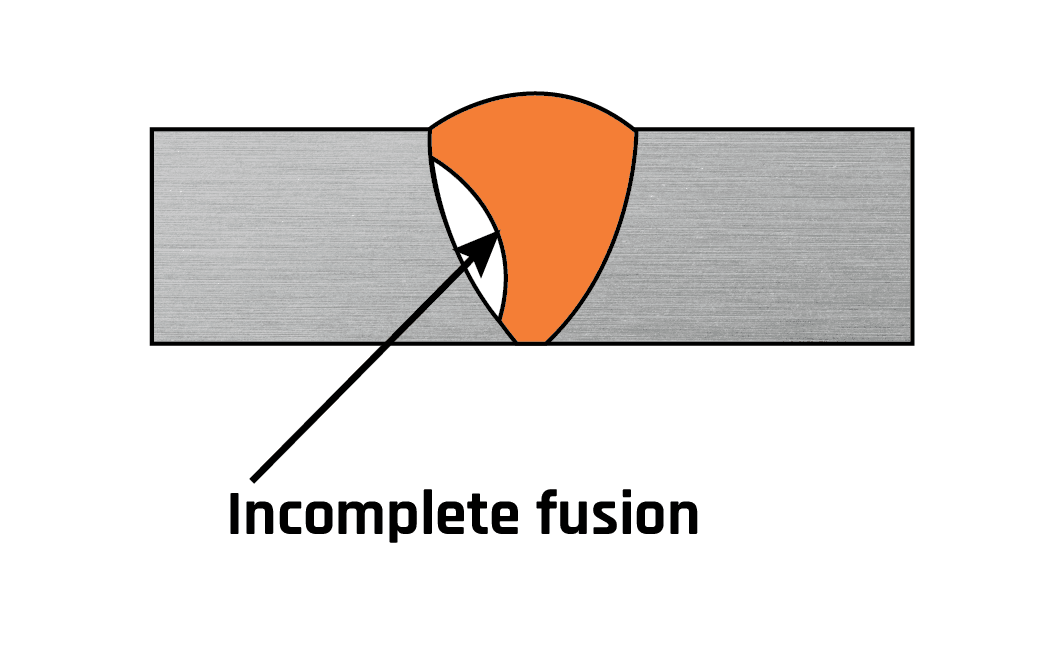Preventing Weld Undercut Demystified: Strategies for Success
Wiki Article
Understanding the Art of Welding: Just How to Prevent Undercut Welding Issues for Flawless Construction Outcomes
Performance and precision are extremely important worldwide of welding, where also the slightest flaw can jeopardize the structural integrity of a produced item. One common challenge that welders face is undercutting, a problem that can lead and deteriorate a weld joint to costly rework. By comprehending the origin of undercut welding and carrying out reliable techniques to stop it, welders can elevate their craft to new levels of excellence (Preventing weld undercut). In the search of remarkable fabrication results, grasping the art of welding to prevent undercut concerns is not simply an ability but a necessity for those pursuing excellence in their work.Understanding Undercut Welding

To avoid undercut welding, welders must make certain appropriate welding specifications, such as adjusting the current, voltage, travel speed, and preserving the correct electrode angle. In addition, utilizing the appropriate welding method for the certain joint arrangement is necessary. Using weaving movements or backstepping techniques can aid make sure appropriate weld steel deposition and decrease the chance of undercut formation. Regular evaluation of welds during and after the welding procedure is likewise critical to catch any undercut very early and make essential adjustments to protect against additional flaws. Preventing weld undercut. By understanding the sources of undercut welding and carrying out safety nets, welders can achieve high-quality, structurally sound welds.
Reasons For Undercut in Welding
Recognizing the factors that contribute to damage in welding is crucial for welders to generate high-grade, structurally sound welds. Damaging occurs when the weld steel does not effectively load the groove created in between the base metal and the previously deposited weld steel. Numerous variables can cause undercut in welding. One common reason is extreme heat input. Welding at high temperatures for extensive periods can result in the base steel melting greater than wanted, causing undercut. Poor welding current or incorrect welding speed can also add to damage. Inadequate current might not supply sufficient heat to thaw the base and filler metals adequately, while excessive speed can protect against correct blend, triggering undercut. In addition, inappropriate electrode angles or wrong lantern control techniques can develop areas of reduced weld metal deposition, promoting undercut. Comprehending these causes and executing correct welding techniques can aid stop undercutting concerns, ensuring solid and sturdy welds.Techniques to Prevent Undercutting

To alleviate the risk of undercutting in welding, welders can use tactical welding strategies aimed at improving the top quality and integrity of the weld joints. One reliable method is to change the welding specifications, such as voltage, existing, and take a trip rate, to make certain correct warm input and deposition. Preserving a suitable electrode angle and making certain regular traveling rate can additionally assist prevent undercut. Additionally, making use of the proper welding technique for the particular joint setup, such as weave or stringer grains, can add to minimizing damaging. Preventing weld undercut.
Additionally, proper joint preparation, consisting of guaranteeing clean base materials without pollutants and utilizing the proper welding consumables, is essential in avoiding undercut flaws. Employing back-step welding techniques and controlling the weld grain account can likewise help disperse warm uniformly and lessen the risk of undercut. Normal examination of the weld joint throughout and after welding, as well as implementing quality guarantee actions, can help in discovering and resolving undercutting issues promptly. By executing these techniques carefully, welders can achieve remarkable manufacture results with very little undercut flaws.
Relevance of Appropriate Welding Specifications
Picking and preserving proper welding parameters is important for achieving successful welds with marginal problems. Welding specifications refer to variables such as voltage, present, travel speed, electrode angle, and securing gas circulation price that straight impact the welding procedure. These specifications must be carefully adjusted based upon the type of material being welded, its density, and the welding technique employed.Correct welding criteria make certain the correct amount of warmth is related to melt the base steels and filler product evenly. If the specifications are set as well high, it can bring about excessive heat input, creating spatter, distortion, or burn-through. On the other hand, if the specifications are as well reduced, incomplete combination, lack of infiltration, or undercutting may occur.
Quality Control in Welding Workflow

Verdict
To conclude, understanding the art of welding calls for an extensive understanding of undercut welding, its reasons, and techniques to stop it. By making certain appropriate welding specifications and carrying out quality control practices, flawless construction outcomes can be attained. It is crucial for welders to continually pursue excellence in their welding operations to stay clear of undercut issues and produce high-quality welds.Undercut welding, a typical defect in welding procedures, happens when the weld steel doesn't effectively load the groove and leaves a have a peek at this website groove or clinical depression along the welded joint.To stop undercut welding, welders should ensure appropriate welding parameters, such as adjusting the existing, voltage, traveling rate, and maintaining the proper electrode angle. Inadequate welding wrong or existing welding speed can also add to damage.To reduce the risk of undercutting in welding, welders can employ calculated welding techniques aimed at boosting the quality and stability of the weld joints.In final thought, understanding the art of welding requires a complete understanding of undercut welding, its useful site reasons, and techniques to avoid it.
Report this wiki page